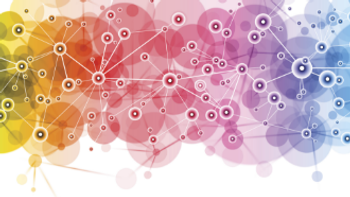
FT-IR Technology Forum
The well-established technique of Fourier transform infrared (FT-IR) spectroscopy offers analytical capabilities for diverse applications, and chemometrics and spectral interpretation software are important elements of the technique.
The well-established technique of Fourier transform infrared (FT-IR) spectroscopy offers analytical capabilities for diverse applications, and chemometrics and spectral interpretation software are important elements of the technique. Participants in this Technology Forum are Richard Larsen of Jasco and Simon Nunn of Thermo Fisher Scientific.
Do you see any new application areas where infrared spectroscopy could make a major impact?
Larsen: Areas such as materials analysis and medical diagnostics are constantly researching new applications for FT-IR spectroscopy; specifically thin-film analysis of semiconductors and analysis of tissue samples for cancer cells, etc.
Nunn: The major impact of FT-IR going forward is likely to be less about specific applications than it is about broadened utilization of the technique. The continued emergence of lower-cost, high performance yet easy-to-use instrumentation allows infrared spectroscopy to be deployed much closer to a sample’s point of origin than in the past, when the technique was largely restricted to centralized laboratories. This is especially important in today’s global economy where supply chains for everything from food to automotive components are complex and geographically diverse.
Using chemometrics still requires highly trained experts that often disagree on the various data processing approaches. How do you see this developing in the future? Will chemometrics be more standardized and automated?
Larsen: I think there will always be some discussion of the chemometric data processing methods among various users and vendors as there is the perception that “my method is better.” Certainly, as the requirement for chemometrics analysis grows, I see that the instrument and third party vendors are providing chemometrics software that is streamlined and much easier to use. In general, nonsophisticated users of these packages are not concerned with the calculation methods used, but rather, require consistent results with a simple interface for data analysis.
Nunn: There will probably be a three-track development pathway going forward. The first track will be development of instrumental techniques that are less dependent upon sophisticated chemometrics for their analytical performance. An example of this is how Raman has started to replace near-infrared (NIR) spectroscopy in some raw material identification applications due to its higher specificity for many compounds. The second track will be the continued development of built-for purpose algorithms that require less intervention by the user. An example of this can be seen in software which automatically identifies the components in a mixture based on a single infrared spectrum without the need for iterative and subjective library searching and subtraction. The third is the incorporation of chemometrics and data analysis algorithms into the instruments themselves. Robust instruments with inherently high specificity that incorporate built-for purpose algorithms enable a broad user-base to take full advantage of the power of spectroscopy. We have seen examples of this in handheld, field-based instruments.
What key features are currently missing from today’s FT-IR systems that would be helpful for users?
Larsen: I can’t think of anything critical that is missing from today’s instrument systems.
Nunn: Software that takes subjectivity out of spectral interpretation is a key area of opportunity to improve the usability of FT-IR. This has the double-benefit of reducing the amount of time it takes to analyze an unknown sample and increasing the analyst’s confidence in the identification. There have been great advances made in this area over the past few years. We can anticipate increased application of this technology to larger data sets, such as those generated by hyphenated techniques including thermogravimetric analysis-IR.
Newsletter
Get essential updates on the latest spectroscopy technologies, regulatory standards, and best practices—subscribe today to Spectroscopy.





